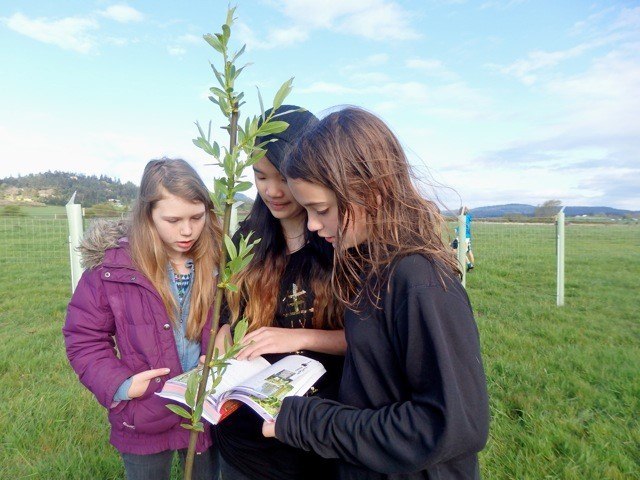Summer on San Juan Island isn’t just beach barbecues and whale sightings; it’s also the best time of year for outdoor improvement projects. From July 18 – 29, drivers on Bailer Hill Road may notice crews and machinery at work in the valley on the Land Bank’s False Bay Creek Preserve, located across from the junction with False Bay Drive. This is the second and final phase of a project designed to improve water quality and stream habitat on False Bay Creek Preserve. The preserve is managed both for farming (it is currently leased for seasonal cattle grazing), and for wildlife and riparian habitat. In the first phase of the project, fencing was installed to exclude livestock from the stream zone, and hundreds of native shrubs and trees were planted along waterways with the help of volunteers from the Washington Conservation Corps and Spring Street International School students.
Over the last two weeks of July, land bank stewards and volunteers from the Northwest Youth Corps will install a livestock watering system to complete the improvement project. The work will include deepening an existing pond, installing a solar-powered pumping station, and burying a pipeline to convey water to a storage tank and three watering stations. Much of the project funding has been provided by the San Juan Islands Conservation District.
Biologists consider the False Bay Creek drainage a likely prospect for restoring native salmonid fish. Feasibility of the effort will depend on improving water quality, stream habitat, and augmenting summer flows.
For info, call 378-4402.



